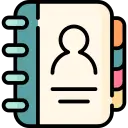PLEASE MATCH YOUR ASSIGNMENT QUESTIONS ACCORDING TO YOUR SESSION
IGNOU BPCC-111 (July 2024 – January 2025) Assignment Questions
Part A
Assignment One
Answer the following descriptive category questions in about 500 words each.
1. Discuss the historical perspectives of psychological disorders from the Ancient Period to the Twentieth Century.
2. Discuss the etiology, symptoms, and treatment of Oppositional Defiant Disorder (ODD) and Conduct Disorder (CD) in children.
Assignment Two
Answer the following short category questions in about 100 words each.
3. Explain the key criteria of normality.
4. Discuss the ethical issue in assessment.
5. Describe the role of attachment theories in understanding childhood depression.
6. Describe the treatment of attention deficits hyperactivity disorder (ADHD).
7. What are the main symptoms of Social Anxiety Disorder as outlined in DSM-5?
8. What are the types of panic attacks?
Part B
TUTORIAL
1. Conduct a survey on the understanding and prevalence of psychological disorders among higher secondary and undergraduate college students.
2. Prepare a questionnaire with at least ten questions.
3. Analyze the responses and categorize the understanding and awareness levels.
4. Identify any misconceptions or gaps in knowledge not discussed in the existing material.
To effectively gather data on students’ understanding and awareness of psychological disorders, a comprehensive questionnaire needs to be designed by referring to the study material.
The format of the questionnaire needs to include:
● Minimum ten questions related to the understanding and prevalence of psychological disorders among higher secondary and undergraduate college students
● Personal details of the sample such as: name (optional), age, sex, class, educational qualification, occupation if any, type of family, marital status etc. relevant in the context of the particular activity.
● Can include open-ended questions also
Once the questionnaire is prepared, conduct the survey targeting higher secondary and undergraduate college students. Ensure a diverse and representative sample size for accurate analysis.
Sample: Minimum 15 students from each category of higher secondary school and undergraduate college students
Data analysis:
Collect the responses and analyze them to identify common perceptions, misconceptions, and levels of awareness regarding psychological disorders. Categorize the findings into different types based on understanding and awareness levels. Refer to the unit on psychological disorders to compare the identified perceptions with those discussed in the material. If any new misconceptions or gaps in knowledge are discovered that do not fit into the existing categories, create new categories for them. Finally, summarize the findings in a report, highlighting the most common misconceptions and suggesting improvements or additional educational resources that could help students better understand psychological disorders.
IGNOU BPCC-111 (July 2023 – January 2024) Assignment Questions
Assignment One
Answer the following descriptive category questions in about 500 words each.
1. Discuss the biological approach to psychopathology.
2. Discuss the benefits and challenges of classification system of psychological disorders.
Assignment Two
Answer the following short category questions in about 100 words each.
3. Explain the clinical picture of suicide.
4. What is autism spectrum disorder?
5. Describe the different elements of clinical assessment.
6. Describe the causal factor of attention deficits hyperactivity disorder (ADHD).
7. What is cognitive behavioural therapy (CBT).
8. What are the five types of specific phobias defined by DSM-5?
TUTORIAL
Conduct a survey of school going higher secondary students and undergraduate college students on their ways to manage stress. Prepare a questionnaire consisting of at least five questions. Refer to the unit on stress and find out the practice of various methods to manage stress. Analyze the responses received and find out their ways to manage stress. Think and write about their stress management ways and keep them into different types of method (discussed in the unit) in which they fall into and create a separate category of method if it does not fall into any of the discussed methods.
The format of the questionnaire needs to include:
• Minimum five questions related to ways to manage stress.
• Personal details of the sample such as: name (optional), age, sex, class, educational qualification, occupation if any, type of family, marital status etc. relevant in the context of the particular activity.
• Can include open-ended questions also
Sample: Minimum 15 students from each category of higher secondary school and undergraduate college students
Data analysis: After the data is collected, arrange the data in the form of different methods used by sample. You can use simple statistics such as calculating mean, percentage, difference etc. The data may be presented in tabular and graphical form as required. The data can also be collected and analyzed qualitatively. Findings need to be discussed in the light of the theoretical inputs.
Format of the Tutorial report: The tutorial activity report will be written by hand only. It can consist of the following parts:
1. Title page (write Tutorial Activity of BPCC 111, mention your name and enrolment number)
2. Background/ Introducing the topic (around 200 words)
3. Methodology (around 150 words)
a. Sample details
b. Preparation of the questionnaire
c. Data collection procedure
4. Findings (around 250 words)
5. Discussion and Conclusion (around 300 words)
6. Implications (around 100 words)
7. Appendix
a. Questionnaire used
b. Filled in questionnaire/ raw data
c. Reference sources used for doing the activity
The tutorial report may be written in about 1000 words. Focus needs to be on the findings and discussion of the data. Implications of the findings need to be highlighted.
IGNOU BPCC-111 (July 2024 – January 2025) Assignment Questions
भाग क
सत्रीय कार्य – I
निम्नलिखित वर्णनात्मक श्रेणी के प्रत्येक प्रश्नों के उत्तर लगभग 500 शब्दों में दीजिए ।
1. प्राचीन काल से बीसवीं शताब्दी तक मनोवैज्ञानिक विकारों के ऐतिहासिक परिप्रेक्ष्य पर चर्चा कीजिए ।
2. बच्चों में विरोधात्मक अवज्ञाकारी विकार (ओडीडी) और आचरण विकार (सीडी) के कारण, लक्षण और उपचार पर चर्चा कीजिए ।
सत्रीय कार्य – II
निम्नलिखित संक्षिप्त श्रेणी के प्रत्येक प्रश्नों के उत्तर लगभग 100 शब्दों में दीजिए ।
3. सामान्यता के प्रमुख मानदंड समझाइये |
4. मूल्यांकन में नैतिक मुद्दे पर चर्चा कीजिए ।
5. बचपन के अवसाद को समझने में लगाव सिद्धांतों की भूमिका का वर्णन कीजिए ।
6. अवधान-न्यूनता/अतिक्रिया विकार (एडीएचडी) के उपचार का वर्णन कीजिए ।
7. DSM-5 में उल्लिखित सामाजिक चिंता विकार के मुख्य लक्षण क्या है?
8. आतंक विकार कितने प्रकार के होते हैं?
भाग ख
ट्यूटोरियल
1) उच्चतर माध्यमिक और स्नातक कॉलेज के छात्रों के बीच मनोवैज्ञानिक विकारों की समझ और व्यापकता पर एक सर्वेक्षण आयोजित कीजिए ।
2) कम से कम दस प्रश्नों की एक प्रश्नावली तैयार कीजिए ।
3) प्रतिक्रियाओं का विश्लेषण कीजिए और समझ तथा जागरूकता के स्तर को वर्गीकृत कीजिए ।
4) मौजूदा सामग्री (SLM) में चर्चा न की गई किसी भी गलत धारणा या ज्ञान में अंतराल की पहचान कीजिए ।
मनोवैज्ञानिक विकारों के बारे में छात्रों की समझ और जागरूकता पर प्रभावी ढंग से डेटा इकट्ठा करने के लिए अध्ययन सामग्री का संदर्भ देकर एक व्यापक प्रश्नावली तैयार करने की आवश्यकता है।
प्रश्नावली का प्रारुप :
• उच्चतर माध्यमिक और स्नातक कॉलेज के छात्रों के बीच मनोवैज्ञानिक विकारों की समझ और व्यापकता से संबंधित न्यूनतम दस प्रश्न ।
• नमूने (sample ) के व्यक्तिगत विवरण जैसे: नाम (वैकल्पिक), आयु, लिंग, वर्ग, शैक्षिक योग्यता पेशा यदि कोई हो, परिवार का प्रकार, वैवाहिक स्थिति आदि विशेष गतिविधि के संदर्भ में प्रासंगिक है।
• मुक्त प्रश्न ( open ended question ) भी शामिल कर सकते हैं।
• एक बार प्रश्नावली तैयार हो जाने के बाद, उच्चतर माध्यमिक और स्नातक कॉलेज के छात्रों को लक्ष्य करके सर्वेक्षण कीजिए । सटीक विश्लेषण के लिए विविध और प्रतिनिधि नमूना आकार सुनिश्चित कीजिए ।
नमूना :
उच्च माध्यमिक विद्यालय और स्नातक महाविद्यालय के छात्रों में से प्रत्येक श्रेणी में से न्यूनतम 15 छात्र होने चाहिए। ( 15 minimum in each group: higher secondary (10th & 12th) and college students (any year)
डेटा विश्लेषण :
मनोवैज्ञानिकों विकारों के संबंध में सामान्य धारणाओं, गलत धारणाओं और जागरूकता के स्तर की पहचान करने के लिए प्रतिक्रियाएं एकत्र कीजिए और उनकी विश्लेषण कीजिए। समझ और जागरूकता के स्तर के आधार पर निष्कर्षो को विभिन्न प्रकारों में वर्गीकृत कीजिए । सामग्री में चर्चा की गई धारणाओं के साथ पहचानी गई धारणाओं की तुलना करने क लिए मनोवैज्ञानिक विकारों पर इकाई का संदर्भ लें। यदि कोई नई गलतफहमी या ज्ञान में कमी पाई जाती है जो मौजूदा श्रेणियों में फिट नहीं बैठती है, तो उनके लिए नई श्रेणियां बनाएं। अंत में, एक रिपोर्ट में निष्कर्षो को सारांशित करें, सबसे आम गलतफहमियों को उजागर कीजिए और सुधार या अतिरिक्त शैक्षिक संसाधनों का सुझाव दें जो छात्रों को मनोवैज्ञानिक विकारों को बेहतर ढंग से समझने में मदद कर सकें ।
टयूटोरियल रिपोर्ट का प्रारूप :
1) शीर्षक पृष्ठ (बीपीसीसी 111 की ट्यूटोरियल गतिविधि लिखें अपना नाम, क्षेत्रिय केंद्र और
2) नामांकन संख्या का उल्लेख करें)
पृष्ठभूमि / विषय का परिचय (लगभग 200 शब्द)
3) कार्यप्रणाली (लगभग 150 शब्द)
(a ) नमूना विवरण (b) प्रश्नावली की तैयारी (c) डेटा संग्रह प्रक्रिया
4) निष्कर्ष ( लगभग 250 शब्द)
5) चर्चा और निष्कर्ष (लगभग 300 शब्द)
6) निहितार्थ ( लगभग 100 शब्द)
7) परिशिष्ट
(a) प्रश्नावली
(b) पूर्ण किया गया प्रश्नावली
(c) संदर्भ स्रोत
* टयूटोरियल गतिविधि रिपोर्ट आप के द्वारा केवल हाथ से ही लिखी जाएगी। टयूटोरियल रिपोर्ट लगभग 1000 शब्दों में लिखा जाएगा। डेटा के निष्कर्षो और चर्चा पर ध्यान केंद्रित करने की आवश्यकता है। निष्कर्षों के निहितार्थों पर भी आलोकपात करने की आवश्यकता है।
ट्यूटोरियल रिपोर्ट को बीपीसीसी 111 की असाइनमेंट फाइल में अंत में रखा जाएगा और अध्ययन केंद्र में जमा किया जाएगा।
IGNOU BPCC-111 (July 2023 – January 2024) Assignment Questions
सत्रीय कार्य – I
निम्नलिखित वर्णनात्मक श्रेणी के प्रत्येक प्रश्नों के उत्तर लगभग 500 शब्दों में दीजिए ।
1. मनोविकृति विज्ञान के जैविक उपागम की चर्चा कीजिए ।
2. मनोवैज्ञानिक विकारों की वर्गीकरण प्रणाली के लाभों और चुनौतियों पर चर्चा कीजिए ।
सत्रीय कार्य – II
निम्नलिखित संक्षिप्त श्रेणी के प्रत्येक प्रश्नों के उत्तर लगभग 100 शब्दों में दीजिए ।
3. आत्महत्या के नैदानिक परिदृश्य की व्याख्या कीजिए ।
4. स्वलीनता वर्णक्रम विकार क्या है?
5. नैदानिक आकलन के विभिन्न तत्वों का वर्णन कीजिए ।
6. अवधान-न्यूनता / अतिक्रिया विकार (एडीएचडी) के कारणात्मक कारकों का वर्णन कीजिए ।
7. संज्ञानात्मक – व्यवहार चिकित्सा (सीबीटी) क्या है?
8. डीएसएम-5 द्वारा परिभाषित पांच प्रकार के विशिष्ट दुर्भीति क्या हैं?
ट्यूटोरियल
स्कूल जाने वाले उच्च माध्यमिक छात्रों और अंडरग्रेजुएट कॉलेज के छात्रों के तनाव को प्रबंधित करने के तरीकों पर एक सर्वेक्षण आयोजित करें। कम से कम पाँच प्रश्नों वाली एक प्रश्नावली तैयार करें। तनाव पर इकाई का संदर्भ लें और तनाव प्रबंधन के विभिन्न तरीकों के अभ्यास का पता लगाएं। प्राप्त प्रतिक्रियाओं का विश्लेषण करें और तनाव को प्रबंधित करने के उनके तरीकों का पता लगाएं। उनके तनाव प्रबंधन के तरीकों के बारे में सोचें और लिखें और उन्हें विभिन्न प्रकार की विधियों (इकाई में चर्चा की गई) में रखें और यदि वे चर्चा की गई विधियों में से किसी में नहीं आती हैं तो उन विधियों की एक अलग श्रेणी बनाएं।
प्रश्नावली का प्रारुप
• तनाव को प्रबंधित करने के तरीकों से जुड़े न्यूनतम पाँच प्रश्न होने चाहिए।
• नमूने (sample) के व्यक्तिगत विवरण जैसे नाम (वैकल्पिक), आयु, लिंग, वर्ग, शैक्षिक योग्यता पेशा यदि कोई हो, परिवार का प्रकार, वैवाहिक स्थिति आदि ।
• मुक्त प्रश्न (open ended question) भी शामिल कर सकते हैं।
नमूना :
उच्च माध्यमिक विद्यालय और स्नातक महाविद्यालय के छात्रों में से प्रत्येक श्रेणी में से न्यूनतम 15 छात्र होने चाहिए (15 minimum in each group: higher secondary (10th & 12th) and college students (any year)
डेटा विश्लेषण :
डेटा एकत्र करने के बाद, डेटा को प्रति दर (sample) द्वारा उपयोग किये जाने वाली विभिन्न विधियों के रूप में व्यवस्थित करें। आप साधारण सांख्यिकी का उपयोग कर सकते हैं जैसे कि माध्य, प्रतिशत, अंतर आदि की गणना करना। डेटा को आवश्यकतानुसार सारणीबद्ध और चित्र के रूप में प्रस्तुत किया जा सकता है। डेटा को गुणात्मक रूप से भी एकत्र और विश्लेषण किया जा सकता है। पाठ्यक्रम के आधार पर निष्कर्षी पर चर्चा कीजिए ।
टयूटोरियल रिपोर्ट का प्रारूप :
1) शीर्षक पृष्ठ (बीपीसीसी 111 की ट्यूटोरियल गतिविधि लिखें अपना नाम, क्षेत्रिय केंद्र और नामांकन संख्या का उल्लेख करें)
2) पृष्ठभूमि / विषय का परिचय (लगभग 200 शब्द)
3) कार्यप्रणाली (लगभग 150 शब्द)
(a) नमूना विवरण (b) प्रश्नावली की तैयारी (c) डेटा संग्रह प्रक्रिया
4) निष्कर्ष (लगभग 250 शब्द)
5) चर्चा और निष्कर्ष (लगभग 300 शब्द)
6) निहितार्थ ( लगभग 100 शब्द)
7) परिशिष्ट
(a) प्रश्नावली
(b) पूर्ण किया गया प्रश्नावली
(c) संदर्भ स्रोत
* टयूटोरियल गतिविधि रिपोर्ट आप के द्वारा केवल हाथ से ही लिखी जाएगी। ट्यूटोरियल रिपोर्ट लगभग 1000 शब्दों में लिखा जाएगा। डेटा के निष्कर्षो और चर्चा पर ध्यान केंद्रित करने की आवश्यकता है। निष्कर्षों के निहितार्थों पर भी आलोकपात करने की आवश्यकता है।
टयूटोरियल रिपोर्ट को बीपीसीसी 111 की असाइनमेंट फाइल में अंत में रखा जाएगा और अध्ययन केंद्र में जमा किया जाएगा।









